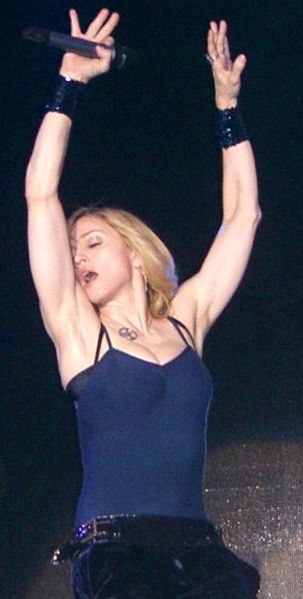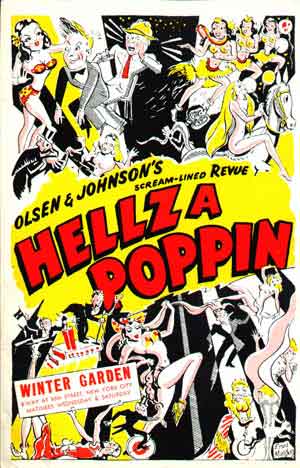.
MADONNA
SHE OVERWHELMS ME, SHE CUTS
ME TO THE QUICK
 |
| David Shankbone |
She’s wild, she’s crazy, she’s noisy, she’s
over-the-top. She’s Catholic and
sacrilegious, self-obsessed and sexy, Carmen Miranda minus the bananas, the
queen of too-muchness, the witch of grotesque. Also, at times, a frenzied super slut, a mindless
singing G-string, a nun turned gymnast with gobs of stripper and a jot of clown. Boldly lipsticked with long blond hair, she
prances and dances, she pulsates, she leaps.
Not bad, for a 61-year-old with six children, four of them adopted, plus one
by an ex-lover and one by an ex-husband.
Her performances are showbiz on steroids, a cross between a
cathedral and a circus, a light show and a Mass. They engulf you like a cosmic explosion, a
fireball of energy that will singe your eyeballs, scorch your ears, and leave
you dazzled, glutted, gutted, limp as spinach, burnt out as an ash. She is, in a word, Madonna.
 |
Here, not quite a blonde.
flickr.com/photos/rwoan
|
She sounds inescapable, but I escaped her for decades,
dismissing her as just another fad of the younger generation that would fizzle
out in time. Fads – they come, they
go. But this one is well-preserved,
still around, still crazy. The
world’s most famous female singer, she
has sold more than 300 million records worldwide. A corporation, I’m told, and worth $800
million. Never fear, she’ll make a
billion soon.
She was born Madonna Louise Ciccone (yes, "Madonna" is really her name) to an Italian American
father with a degree in engineering, and a mother of French Canadian descent,
in Bay City, Michigan, on August 16, 1958. Growing up in the suburbs of
Detroit, she was raised a Catholic, and
boy, does it show up in some of her performances. With the name “Madonna,” she has said, she
had to become either a nun or what she is.
In high school she got good grades, did cartwheels in the hallways
between classes, and hiked up her skirt during class, to give the boys an
eyeful. Not the behavior of a future
nun.
In 1968, at age 20, she dropped out of college and came to
New York with $35 in her pocket. It was
the first time she’d ever flown in a plane or taken a ride in a taxi. She began working as a backup dancer for other
artists, became herself a singer, wore fishnet stockings and a crucifix,
recorded, and exploded into fame; the rest is history. Two husbands to date, both divorced, and a
slew of lovers.
 |
| Not always in a robe and cowl. |
I do wonder how I could have missed her. I too am a transplanted Midwesterner who
fulfilled himself in New York. And her
birthday, August 16, is the date of my partner Bob’s death. But let’s not push it. She and I are oceans and eons apart. Yet at this late date my young friend Silas,
a devoted fan of hers, teased up my morbid curiosity by announcing that he had
just spent a small fortune to be in the front row of a concert of hers next
fall. Impressed, I decided to take a
glance at this irrepressible phenomenon.
Some glance! It was mind-shattering,
it cleaved me to the quick..
Having seen twice now, full-screen on You Tube, her Met Gala
2018 performance, I am overwhelmed. The
Met Gala is an invite-only annual fund-raising event for the museum’s Costume
Institute, where female celebrities parade their lavish and impossible gowns
before a battery of cameras. The 2018
theme, “Heavenly Bodies: Fashion and the Catholic Imagination,” was well
calculated to inspire Madonna’s Catholic-obsessed psyche to heights and depths of
fervor.
The performance starts out with clanging bells in what seems
like a Gothic cathedral with stained glass windows and a procession of monks in
long robes and cowls. These shadowy
figures, her all-male, all-gay chorus, sing Gregorian chants, with intermittent lightning flashes
and pictures of the Virgin. Then, as the
audience’s excitement mounts and their ovation crescendos, she appears at the
top of a flight of stairs, in a long purple robe and a cowl, fiercely
lipsticked, her golden hair in braids, with not a wrinkle in sight. Her voice projects resonantly the words of
“Like a Prayer”:
“When
you call my name
It's like a little prayer
Down on my knees
I want to take you there
In the midnight hour
I can feel your power
Just like a prayer
You know I'll take you there.”
It's like a little prayer
Down on my knees
I want to take you there
In the midnight hour
I can feel your power
Just like a prayer
You know I'll take you there.”
This I love, for she is singing a love song – “I want to
take you there” echoes repeatedly – but, well-garbed from the neck down, she is
anything but sexy. Then she tosses the
cowl back and slowly, still singing and always in a spotlight, she descends the
steps. Finally, at the bottom, she
tosses off the robe and reveals herself in what looks like a corset over a
white gown, which, Silas observed, is still the most clothed he has ever seen
her. Next, she is surrounded by four
girls in white who paw her and grapple with her, as if to silence her, but this
struggling woman is not to be silenced.
A second number follows, and then a third entitled
“Hallelujah,” which almost has a Protestant touch, with two dark-clothed men in
clerical collars walking solemnly behind her, followed by another processional
chorus, against a backdrop depiction of Christ on the cross. Not since Handel’s “Hallelujah Chorus” had I
heard so many resonant hallelujahs. This,
too, I loved. As for the whole
pseudo-religious setting, I can only say, once a Catholic, always a Catholic,
no matter how far you stray from the Church. From its very start Protestantism, wary of
overwrought ritualism and embellishments, and enamored of simplicity, had a
good bit of asceticism. Raised a
Protestant, as I was, Madonna would never have become Madonna. At least, not this Madonna.
It was hokey, it was supertheatrical, it was contrived. But so, by its very nature, is all
theater. I liked it because it surprised
me, it wasn’t what I had anticipated. If
you want to sample it yourself, go here. But be prepared for sound.
 |
The other performance that Silas showed me full-screen on
YouTube was totally different, a kind of
girlie show where she strutted and pranced and contorted herself in a far more
secular setting. This didn’t get to me
at all, for girlie shows are a dime a dozen, and always have been. At times she reminded me of Bette Midler
strutting grotesquely on a stage in Washington Square Park following a Gay
Pride parade of years ago.
Madonna, so Silas tells me, was hot stuff in the 1980s, when
she first skyrocketed into fame,
so shocking the Church that it threatened excommunication. Today, he says, when younger people see her
as a bit passé, her pseudo-Catholic hocus is routinely shrugged off. But she did, for that generation, what
performers in the past have done for theirs.
A long tradition precedes her.
 |
| Hellzapoppin poster, 1938. More girlies than hellfire. |
For novelty shows that seem to break all the rules, on
Broadway there was Hair in the 1960s
(I saw it, loved it), and Hellzapoppin in
the late 1930s (I saw the movie, remember people being roasted over the flames of
Hell). As for girlie shows, nothing in
its time matched the Ziegfeld Follies of the 1920s and before, which I also saw in a
Hollywood film about Flo Ziegfeld. I
especially recall a soaring stage tower with a chorus of scantily clad chorus
girls, climaxed at the very top by a male performer fully dressed in top hat and tails,
singing genially.
 |
| Ziegfeld Follies of 1916. Watch out, Madonna, here's competition. But maybe she can't sing. |
Only the Great Crash
of 1929, impoverishing Ziegfeld, and the impresario’s death in 1932, put an end
to it.
 |
| Florenz Ziegfeld, 1928. The year of my birth, one year before the Crash. Is there a link? |
But girlie shows date back even further. There were the Floradora girls of a Broadway
show of 1900, a sumptuously clad sextet in picture hats with frilly parasols,
who entranced the males of the time.
They all married millionaires and one of them, Evelyn Nesbit, a stunning
beauty, was the unwitting cause of a famous murder, when her obsessively
jealous husband shot her ex-lover, Stanford White, the most famous architect of
the time, in the rooftop theater of the Madison Square Garden before scores of
witnesses.
 |
The first girlie show was probably the Black Crook, a splashy Broadway musical of the 1860s and 1870s with
an impossible and forgettable plot. It featured
bevies of chorines in flesh-colored tights, a hurricane of gauze, a grotto with
nymphs and gods that rose magically out of the floor, fairies lolling on silver
couches in a silver rain, angels dropping from the clouds in gilded chariots,
and a cancan of 200 shapely legs kicking high, then turning to lift their
skirts and show their frothy gauze-clad derrieres. What Madonna was to the 1980s, the Black Crook was to its time. It shocked, it titillated. From it came the Broadway musical and the burlesque show, both of them offering skimpily clothed, exuberant female stars.
And before that? The
traveling circus, born in Putnam and Dutchess counties, New York, and adjacent
western Connecticut, with clowns and elephants, and rhinoceri labeled unicorns,
but no clothed or unclothed women. And
before that? Great Awakenings, revival
meetings with fire-and-brimstone sermons that terrified sinners into shakings
and frothings at the mouth, and swoonings and cries of “hallelujah,” as they staggered
up to the mourners’ bench to beseech the Lord to save them from the fiery
pit.
 |
| A Methodist revival meeting from the Second Great Awakening, 1839. This is how the Protestants used to do it. Spectators were powerfully wrought upon. |
Americans have always wanted
entertainments that were big, noisy, cosmic, and convulsive. Madonna, you’re in a long and glorious
tradition. More power to you. Rage on till you creak.
© 2020 Clifford Browder
No comments:
Post a Comment